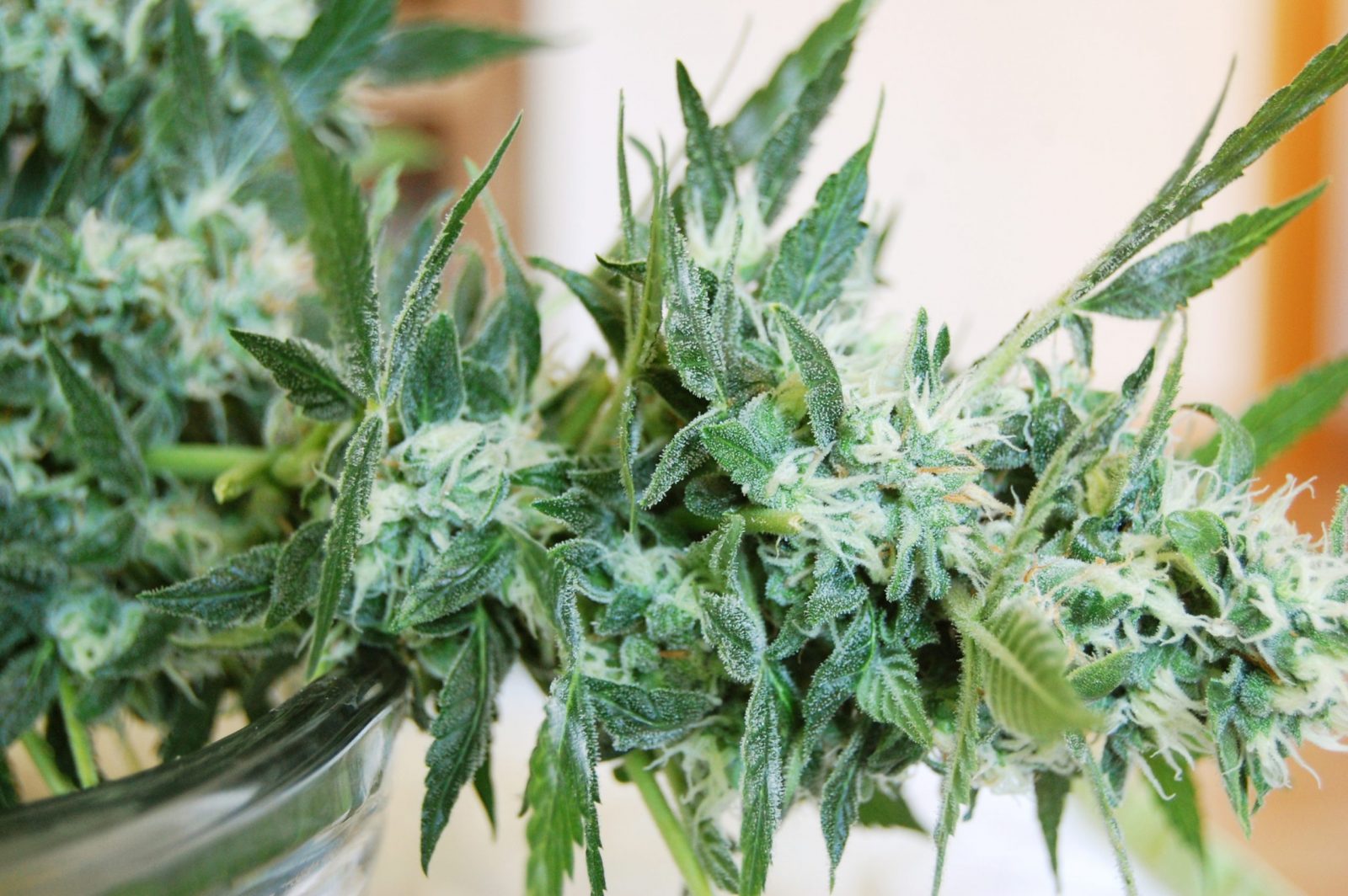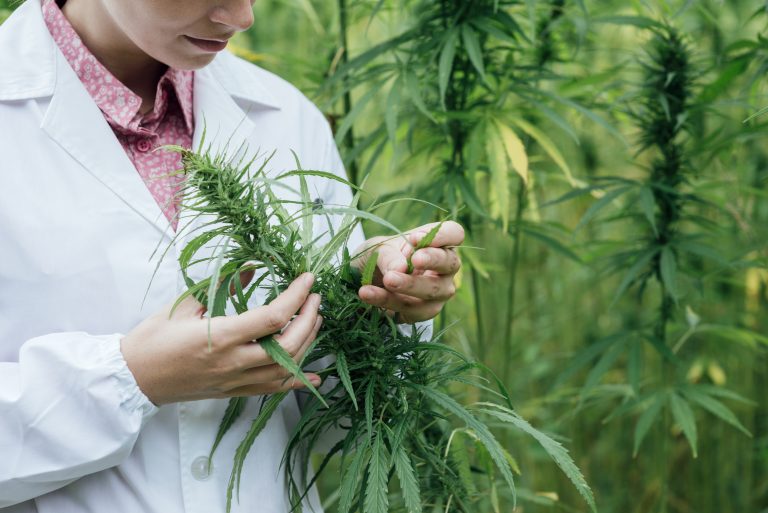
Eden Water Technologies - We’re Revolutionizing Water Treatment & Fertigation for Cannabis
We’re Revolutionizing Water Treatment & Fertigation for Cannabis

We’re Revolutionizing Water Treatment & Fertigation for Cannabis

Powdery mildew is a fungal disease that can affect cannabis plants and can cause significant damage if left untreated. It is caused by the fungus Oidium, which thrives in warm, humid environments. The fungus spreads quickly and can be identified by its white, powdery appearance on the leaves of the plant. If left untreated, powdery mildew can cause stunted growth, yellowing of leaves, reduced yields and even death of the plants.
It is important to know how to prevent and treat powdery mildew on your cannabis plants . This article will provide an overview of powdery mildew and discuss some strategies for preventing and treating it in cannabis plants.
Powdery mildew is a common fungal disease that can affect cannabis plants. Some of the most common symptoms that a cannabis plant will manifest in response to powdery mildew are a white or yellowish-white powdery residue on leaves and stems, as well as leaf spots that often have a circular shape with orange hues in the center. Additionally, some leaves may turn brown or yellow before they drop off of the plant altogether. Plants may also be stunted or turn brown.
Cannabis plants will often display symptoms of powdery mildew when the humidity is high and the temperature is between 60-80 degrees Fahrenheit. The conditions are ideal for the spread of this fungi because they provide a medium that enables it to reproduce rapidly and successfully. In addition, cannabis has an increased susceptibility to powdery mildew because it lacks any natural defenses against pathogens, especially fungi with such delicate spores that can easily grow on plant surfaces.
If left untreated, powdery mildew can cause severe damage to cannabis plants, leading to reduced yields and even death of the plant. It is important to identify the symptoms of powdery mildew early so that it can be treated before it causes too much damage.

Powdery mildew is a common problem for cannabis growers and can cause significant damage to crops if left untreated. When it comes to preventing and treating powdery mildew, understanding the environmental conditions that cause it is key to preventing the disease from occurring in your cannabis plants. High humidity and lack of air circulation are two of the main factors that contribute to powdery mildew, so monitoring these conditions and taking proper preventive measures can help keep your plants healthy.
High humidity levels are one of the main environmental conditions for mildew growth, as it encourages the spread of spores. Factors such as temperature and light intensity also play an important role in determining whether or not powdery mildew will develop on cannabis plants.
When the air around the plant is too moist, it creates an ideal environment for mildew to grow and spread quickly. Poor air circulation can also contribute to powdery mildew growth as stagnant air allows spores to settle on leaves and stems without being disturbed. Additionally, when plants are too close together they can block out light and airflow which can lead to an increase in humidity levels and lack of oxygen which encourages mildew growth.
Powdery mildew outbreaks can also happen as a result of infected clones or by bringing in plants that already contain the fungus. Both of these scenarios are difficult to detect, making it essential to practice precautionary measures in order to prevent the spread of this disease.
By understanding these causes, growers can take steps to reduce the risk of their crops becoming infected with this fungus.
Powdery mildew can be a tricky problem for cannabis gardeners. Fortunately, there are preventative measures that can help keep your plants free of this pesky fungus. These include avoiding overcrowding and providing adequate ventilation, as well as using specific fertilizers and fungicides.
This fungus thrives on high humidity and the presence of moisture to infect a plant’s leaves and stems. If you notice powdery mildew on your plants, it is likely that you have moist conditions that are not ideal for your garden.
One way to prevent this fungus from developing is by providing ample space for airflow and ventilation throughout your garden so that it can dry out more quickly. In fact, if powdery mildews appear as early as flowers begin to open, it is likely that your humidity levels are too high.
To prevent and control powdery mildew, fungicides are often used. Fungicides are chemical compounds that are used to kill or inhibit the growth of fungi and other microorganisms. They can be applied as a spray, dust, or drench and can provide protection against powdery mildew for up to several weeks. In addition, fungicides can also help reduce the spread of the disease by killing spores before they have a chance to germinate on new plants. When using fungicides, it is essential to do thorough research in order to determine the proper dosage and application method for optimal results. Doing so will help protect plants from harm and maximize their effectiveness.

Preventing & treating powdery mildew can be done using organic solutions. Natural fungicides such as neem oil, garlic oil, and baking soda can be used to treat powdery mildews without the use of harsh chemicals. By using these organic solutions, you can keep your cannabis garden free from powdery mildews while avoiding the use of potentially harmful chemicals. .
Neem Oil
Neem oil is a natural fungicide that can be used with little to no risk to the environment. It has been shown to be highly effective at preventing powdery mildews from spreading, especially on outdoor plants. It can be used as a spray on the leaves, poured directly into soil or added to hydroponic systems for added protection. For use in hydroponics, mix one teaspoon of neem oil per quart of water.
Garlic Oil
Garlic oil is effective for controlling powdery mildews in plants. To use it, add a few drops to your watering can before you water your plants.
Baking Soda
A common way to treat powdery mildew on cannabis plants is with baking soda (sodium bicarbonate). Simply add two tbsp of baking soda in one gallon of water, or two tbsp with a ½ tsp of liquid soap and one gallon of water into a spray bottle. Apply the solution once a week to make your plants inhospitable for the fungus to survive.
Potassium bicarbonate
Potassium bicarbonate is an effective tool for controlling powdery mildew on cannabis, as it kills the fungal spores upon contact. It should definitely be included in your plan to combat this fungus.
Mix one tablespoon of potassium bicarbonate with one gallon of water and add half a teaspoon of liquid soap for extra strength. Regular application every 1-2 weeks will help keep the fungus away.
When faced with a more serious infestation of powdery mildew it is recommended to use potassium bicarbonate as it provides better results.
Vinegar
An easy and affordable way to protect your plants from powdery mildews is by making your own vinegar fungicide with only two ingredients. To make a spray for treating powdery mildew on your plants, combine one tablespoon of white distilled vinegar with one quart of water in a spray bottle. Spray the mixture on infected leaves completely to rid them of the fungus. Repeat as needed for best results.
Hydrogen Peroxide
To get the most beneficial effect from using hydrogen peroxide and water on your plants,. To kill the fungus, mix 4 or 5 tablespoons of 3% hydrogen peroxide with 1 pint of water in a spray bottle and then water the plants heavily. It is recommended to test it first in order to determine the ideal ratio. Try spraying a couple of leaves affected by powdery mildew with the mixture & wait for 24 hours before assessing if any progress has been made in diminishing the infection.
Powdery mildew is a common problem for cannabis growers, but it doesn’t have to be. With the right preventative measures and treatments, powdery mildews can be eliminated or prevented from occurring in the first place. There are many different methods that can be used to combat powdery mildews that have been discussed in this article. Different approaches have their own strengths & weaknesses, so it is important to select the approach that fits your needs most effectively. To sum up, managing powdery mildews can be a real challenge when cultivating cannabis. However, it is possible to prevent and overcome this problem with the right solutions. Before dealing with it, make sure to do your research and be well-informed about all aspects of it.
Ditch Batch Tanks, Manual Mixing, and Lost Yields for a Smarter Solution The Hidden Costs of Traditional Fertigation Why Your Profit Margins Are Suffering Manual
The Future of Cannabis Cultivation: Automated Fertigation vs. Traditional Batch Tanks In the rapidly evolving cannabis industry, the difference between profitability and loss often comes

Avoiding piping mistakes in cannabis cultivation is crucial for efficient fertigation and water treatment. At Eden Water Tech, we frequently encounter three common piping issues

In the world of cannabis fertigation, choosing the right fertigation system is critical. From nutrient delivery and water management to energy-efficient operation and long-term maintenance,

Join our email list for exclusive ebooks, tips, and the latest in cannabis fertigation and irrigation solutions.

We’re Revolutionizing Water Treatment & Fertigation for Cannabis
Designed by ThrivePOP ❤️